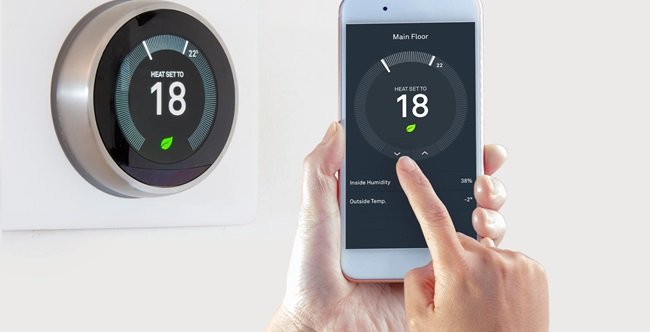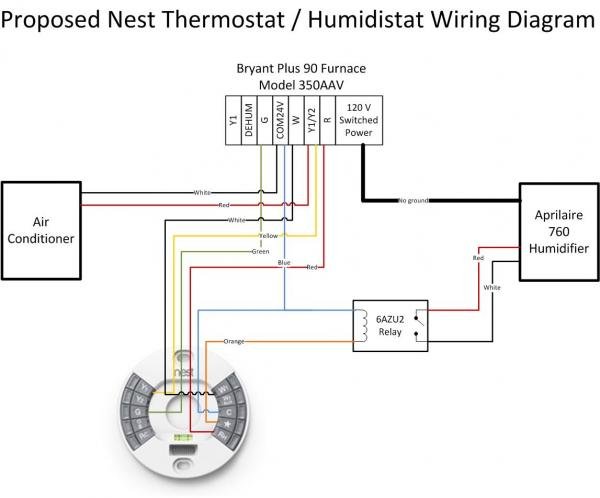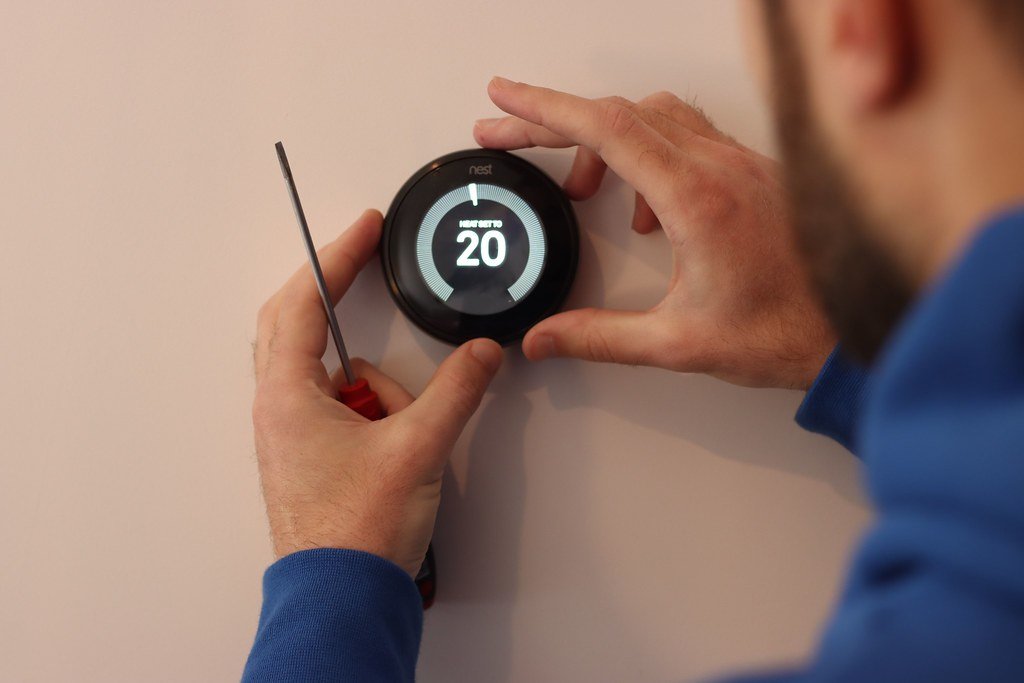The word ‘SMART’ has almost become a password for advanced devices, from gadgets to household appliances and anything between and beyond, which help us live a comfy life. There is hardly any life without these smart appliances since they facilitate efficient energy consumption and in many cases, help us with time-consuming and repetitive tasks.
Nest thermostat is one such device that has been developed to make our life more comfortable. In this article, we will talk about nest thermostat and installation procedure among other details.

What is a Nest Thermostat?
Thermostat is used to detect temperature changes to maintain the temperature of a certain area at a necessarily constant level. A nest thermostat is a small-sized device allowing users to remotely adjust their thermostats via a suitable app installed on their device.
Nest thermostats feature an electronic, programmable and autodidactic, Wi-Fi-enabled regulator that intensifies heating and cooling of houses and workplaces while conserving energy throughout the process.

Nest Thermostat Installation
Installing a nest thermostat is neither a Herculean task nor a rocket science. With the right tools and guidelines, you will be able to install a nest thermostat without anyone’s help. It does not take more than 20-30 minutes to install a nest thermostat and hence, a DIY project in most cases. However, a nest pro can help you with easier and faster installation.
Let’s get started:
Not all installation procedures are the same and there may be slight variation, depending on the model you are using.
Check your system’s compatibility: Nest thermostats can function with a range of heating systems. Check if your nest thermostat is compatible with your home.
Identify the spot where to install the thermostat: Some thermostats are to be placed on a stand whereas other types need wall installation. Therefore, depending on the type of thermostat, you must identify a suitable spot for its installation.
Follow the instructions: The Nest app has step-by-step instructions for thermostat installation. Follow these steps to install and wire your thermostat.
‘Smart’ is the Catchphrase
In recent years, there has been much hullabaloo about smart devices. The craze is to stay. Smart devices are in high demand. They are loaded with smart features, which are remotely controllable within your home premise.
Thanks to technology, we now have a range of smart devices compatible with our modern lifestyle and luxury craving.
How Smart is a Smart Thermostat?
A smart home thermostat is a Wi-Fi indoor regulator that is used for controlling a home’s ventilation, heating and air conditioning. The self-explanatory title tells us that it’s only for domestic usage. It is as powerful as a programmable indoor regulator.
It allows you to control the temperature of your home as per your convenience and comfort throughout the day.
Smart manoeuvring of these devices is possible through a host of extraordinary smart features such as, sensors and Wi-Fi network. Wi-Fi indoor regulators are associated with the Internet via a Wi-Fi organiser.
A smart thermostat allows you to alter heating and cooling settings through different internet-connected gadgets such as, smartphones, tablets or smart speakers. The device lets you schedule your temperature settings and incorporate those into your home automation systems.
Smart thermostats, despite incorporating smart features, are sleek and stylish, with every bit of them sporting a modern look. They are lightweight and portable. These thermostats are a major improvement over their clunky traditional counterparts.
What Other Functions Can a Smart Thermostat Do?
Some specific models of smart thermostats are loaded with a plethora of advanced features. Based on your heating and cooling preferences, these smart thermostats can automatically adjust temperatures to keep you in optimum comfort.
Many of the high-end smart thermostats also have diagnostic features to help you detect problems. These devices can also allow you to set a reminder for system maintenance like when to replace your air filter.
Your thermostat can also provide you with necessary information about its energy consumption or even display a reading on indoor humidity levels.
Some thermostats also have room sensors to measure the temperature in your room or a specific area of your room and can even heat or cool that room or area accordingly. A thermostat with geofencing can recognize when you enter your home and or go out, thereby saving on energy consumption when you are not at home.
Wrapping Up
This article is a small introduction to nest thermostat and installation and smart thermostats’ functions. Most people are confused between programmable thermostats and smart ones. To them, they are synonymous whereas the reality is different.
Programmable thermostats allow users to program settings or suggest schedules. A smart thermostat is many notches up a programmable thermostat that allows users to program their desired settings and connect to advanced Wi-Fi features and functions.
In other words, a smart thermostat makes temperature adjustment and program scheduling much easier for users, allowing them to access their thermostat remotely via a smartphone or other smart devices.











